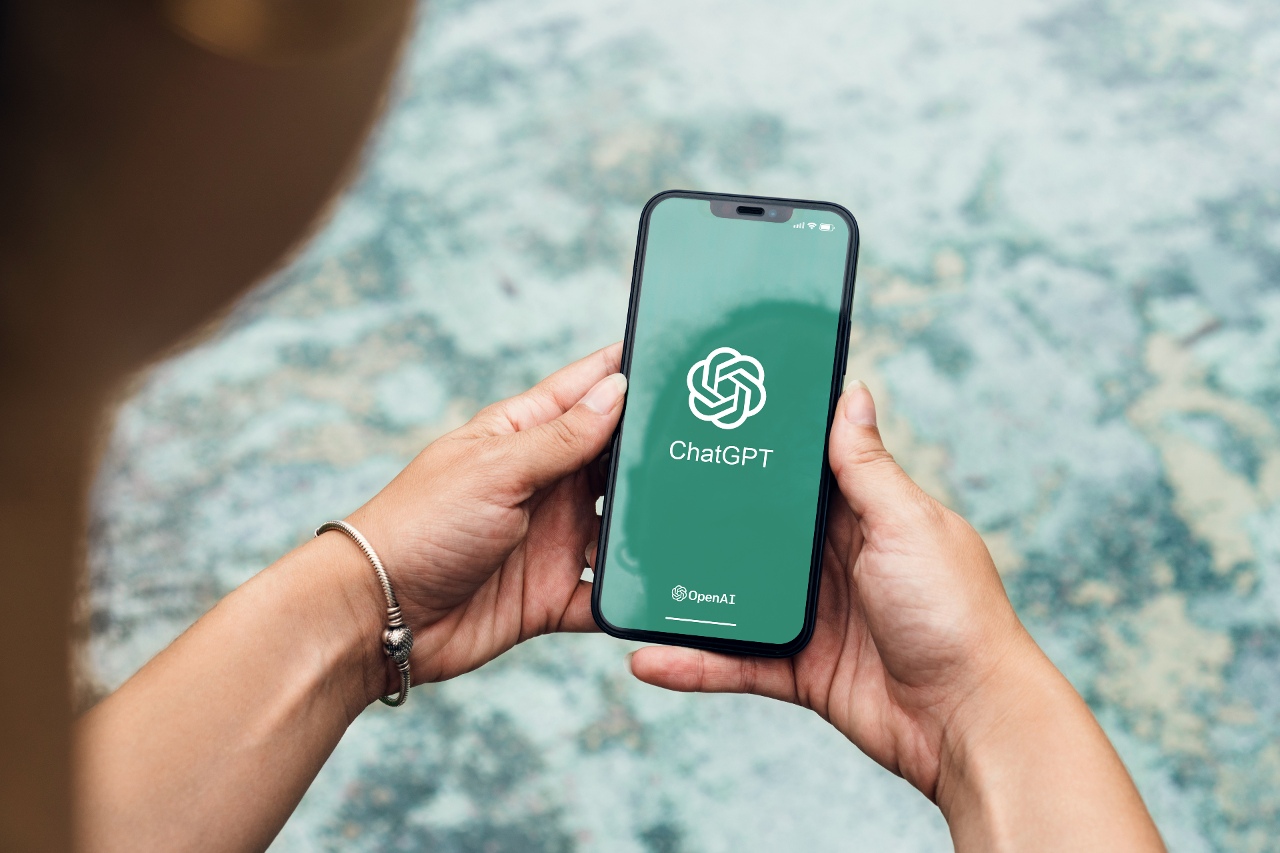Operating across various channels from emails to social media and beyond, we outline what AI marketing means, the major providers of marketing automation tools in Japan and how companies are leveraging their services.
Table of Contents
What Does AI Marketing Mean?
AI marketing is the process of using AI tools and systems such as data models, algorithms and machine learning to support a wide range of marketing processes.
This includes producing insights that businesses can be used to improve marketing activities as well as the actual execution of a range of functions with little or no human oversight.
Many businesses can benefit from free-to-use and off-the-shelf AI services, while larger enterprises might opt for more specialised and sophisticated AI systems.
Content Creation

AI-powered tools like Chat GPT utilise natural language processing algorithms to help users generate coherent written content based on prompts and data. This can include blog posts, product descriptions, social media posts, and email newsletters.
However, the dangers of using systems like Chat GPT without the right checks and balances are manifold. This includes a potential lack of originality, human creativity and brand voice accuracy, as well as content potentially misrepresenting the truth or even being factually incorrect.
Further, a number of additional risks emerge when trying to use AI tools like Chat GPT to create content in other languages, such as Japanese. Chief among these is the possibility of producing inaccurate translations due to the model’s limited understanding of context and cultural nuances, leading to potential miscommunication.
HB Pro Tip: Relying on AI to write product descriptions that include mistakes or exaggerations could be incredibly damaging for your credibility as accuracy and transparency in company content is incredibly important in Japan. In many contexts, consumers dislike marketing content that is too elaborate or embellished, instead preferring honest and detailed information that portrays the truth.
Explore the Difference between American and Japanese Advertising
Tips for Using Chat GPT for Content Creation
While AI can be used to streamline and enhance the content creation flow, it’s essential to balance it with human creativity and expertise. In other words, use AI-generated content as a starting point and add a human touch to make it unique and engaging.
- Simplify Language — Use clear and straightforward language in your prompts. Avoid complex sentences or idiomatic expressions that might be challenging for the AI model to understand, especially when working between languages as different as English and Japanese.
- Double-Check Translations — If you’re translating content into another language, always verify the accuracy of the AI-generated translations with a Japanese native speaker or a professional translator. AI may not always capture cultural nuances and context accurately.
- Provide Context — Give the AI model sufficient context in your prompts. The more context you provide, the better the AI model can understand your requirements and generate relevant content. Again, this will likely require a native speaker to frame the prompt suitably.
- Proofreading and Editing — Always proofread and edit the output to ensure alignment with your brand voice. Content created by AI may require further localization to suit the cultural and linguistic nuances of the target audience, as well as your brand tone.
Japanese Website Localization – Do I Need to Reinvent My Brand?
Can AI Create Visual Content Too?

AI image creation bots like Midjourney, Dall-E, and DreamStudio can also assist marketers in generating branded visuals such as photos, video clips, GIFs, text overlays, illustrations, and other graphic elements—all without the need for manual design efforts.
However, there are also several potential drawbacks and challenges when using generative AI to create visual content for the Japanese market, such as limited control over the specific outcomes and the risk that it may unintentionally replicate existing copyrighted content.
Japanese design trends can also differ substantially to those that exist in Western nations, with cultural preferences and aesthetic traditions playing a huge role in the way information is displayed visually in Japanese advertising and marketing.
Chatbots and Virtual Assistants for Better Customer Service

Before entering the Japanese market, it is important to understand how much importance the nation places on customer service, which is deeply ingrained in the culture and business practices.
By leveraging chatbots effectively, ecommerce retailers and other types of organisations have been able to increase responsiveness, foster positive customer experiences, and strengthen their relationship with customers. Other benefits include:
- Japanese Language Support — Multilingual chatbots can assist customers in their preferred language, making it easier for foreign brands to keep up with the demands of maintaining high levels of customer service in the Japanese market.
- 24/7 Availability — Chatbots can provide immediate answers around the clock, providing instant responses to customer queries and support requests in any time zone, even outside of regular business hours.
- Consistent and Accurate Responses — Chatbots can help to deliver consistent and accurate information based on predefined rules and data. This reduces the risk of human errors and ensures customers receive reliable support in their own language.
- Scalability — Chatbots can handle multiple customer inquiries simultaneously, making them ideal for managing high volumes of interactions during peak times or marketing campaigns.
- Cost-Effectiveness — Hiring a team of native Japanese speaking agents to handle customer inquiries and requests can be expensive. Implementing chatbots can significantly reduce this burden, allowing businesses to automate routine tasks and allow human agents to focus on more complex and strategic issues.
- Personalisation — Advanced chatbots can use AI and customer data to offer personalised recommendations and solutions based on individual preferences and past interactions.
- Data Collection and Analysis — Many organisations now use chatbots to gather valuable customer data during interactions, providing insights into customer preferences, pain points, and behaviour. Brands can use this data for targeted marketing and continuous improvement of their services.
- Improved Lead Generation and Conversion Funnel — Chatbots can engage potential customers, provide product information, and guide them through the sales funnel, leading to increased conversions rates.
Tips on Developing a Chatbot for Customer Service in Japan
- Utilise natural language processing to enable more natural and conversational interactions
- Facilitate smooth transitions to human agents for complicated queries or escalations
- Consistently update chatbot knowledge bases to maintain up-to-date and accurate information
- Regularly assess chatbot performance and gather feedback to continuously enhance their efficiency
Marketing Automation

AI marketing automation combines AI capabilities with marketing automation tools to streamline and optimise various marketing tasks and workflows.
It allows marketers to create more efficient and effective campaigns, engage with customers on a personalised level, and nurture leads through the sales funnel.
Currently, AI marketing automation is most commonly used in email marketing, ad targeting, social media management, lead scoring and customer support but its potential uses are constantly growing.
Automated Email Marketing Features
- Automated Triggers — Predefined triggers that automatically send personalised emails based on specific customer actions, such as a welcome email to new subscribers or a follow-up email after a purchase.
- Dynamic Content — Dynamic generation of email content based on present templates and on real-time data, ensuring that recipients receive the most relevant and up-to-date information.
- Personalisation — Analysis of customer data and behaviours to personalise email content, such as product recommendations based on past purchases or content tailored to individual interests.
- Subject Line Optimization — Testing of different subject lines and headings to improve open rates, engagement and click through.
- Send Time Optimisation — Analysis of past email engagement patterns of recipients in order to determine the best time to send emails to maximise open and click-through rates.
- List Segmentation — Segmentation of email lists based on customer attributes and behaviours, allowing marketers to send targeted messages to specific groups.
- Predictive Analytics — The prediction of customer behaviours and preferences, helping marketers send proactive and relevant emails that anticipate customer needs.
- Automated Responses — Handling of customer inquiries with real-time responses.
AI in Japanese Social Media Marketing
A few key ways AI tools can be used for social media marketing in Japan include:
- Optimising posting schedules
- Managing conversations with customers and followers
- Analysing data about user preferences or behaviour
- Automating post and caption writing
- Creating and editing images and videos
Customer Personalisation and Segmentation
Understanding customer preferences and catering to their needs tactfully is crucial for businesses to thrive in Japan.
Starting A Business in Japan? Here’s Our Guide
Product Recommendations
Japanese consumer preferences can differ due to various cultural, social, and economic factors unique to the country.
AI algorithms can be used to analyse customer data, including past purchases, browsing behaviour, and interactions, to understand individual preferences and interests. This may allow businesses to suggest products or services that are more likely to appeal to each customer, leading to increased conversion rates and customer satisfaction.
Targeted Advertising and Tailored Messaging
AI can analyse vast amounts of customer data and identify patterns that can contribute to highly targeted advertising campaigns.
By understanding customer demographics, interests, and behaviours, AI-powered ad targeting —available through platforms such as Meta Ads—ensures that advertisements are shown to the most relevant audience.
However, while this can lead to better engagement and higher chances of conversion, over relying on AI automation has its risks. The best campaigns still require native Japanese speakers to guide the process, making sure ads are always original, engaging and relevant to the target audience.
Analytics

The use of AI in Japanese marketing stretches into the realm of predictive analytics, where businesses can forecast trends, optimise strategies, and stay ahead of the curve.
It does this by utilising advanced algorithms and machine learning techniques to analyse historical data and make data-driven predictions about future events or outcomes.
One key example of this is demand forecasting. AI can analyse historical sales data, market trends, seasonal patterns, and economic indicators in Japan to predict future demand for a foreign business’s products or services.
AI-driven competitive intelligence tools can also support competitor analysis and pricing strategies by monitoring the activities of local competitors in the Japanese market, such as product launches, price changes and promotion campaigns.
Japan Market Analysis – Key Insights for 2023
AI in Japanese Society
Japanese companies have traditionally developed their technology in-house to safeguard their intellectual property. However, as the world of AI is rapidly developing rapidly, with new technologies and systems completely reshaping the business landscape, many Japanese companies are realising the need to adopt a more open-minded approach.
While brands and marketers must be cautious about how they use AI in Japanese marketing, considering the potential benefits and uses of them is important.
When done right, the onboarding of AI systems can help businesses stay competitive, improve operational efficiency, and leverage data-driven insights for better decision-making.